It is virtually impossible to talk about the fascinating world of beekeeping these days without mentioning the flow hive.
To be honest, I’m glad to have news that isn’t all doom and gloom. Over the last decade or so, the buzz words, if you’ll forgive the pun, have been “varroa” and “CCD.”
That doesn’t conjure up the wonderful experience that beekeeping can be.
Then
This review post is going to cover the features, advantages, and disadvantages of the flow hive.
Right then, I’ll buzz you into the flow hive, and let’s take a look around.
Flow Hive at a Glance
Basically, the flow hive is a Langstroth hive that allows you to harvest honey without opening up the hive. Sounds cool, doesn’t it? Well, it is.
It comprises two boxes: a brood box, which is similar to a regular Langstroth brood box, and a flow super. The super is where the magic happens.
The entire comb has been constructed for the bees in order to fit a back door to the honey pantry.
The bees will go about their business filling in nectar in the cells and fanning away the moisture until the honey is finally ready for long-term storage. When it is, they cap the cells, just like they would in any other hive.
Enter the beekeeper. Instead of opening the hive roof and having to carry away the honey supers, you crack open the back door with a special key.
This action splits the comb in such a way that the honey drips down to a trough and flows out of the hive without breaking the wax caps.
It’s a nifty invention that takes away the heavy lifting and bee disruption of the honey harvesting process.
Brief History of Flow Hive
Beekeeping can be a lifelong addiction. Sometimes, like Australian Cedar Anderson, your love for bees can start young.
He started when he was just six years old. With the guidance of his father, Stuart Anderson, his love for bees grew with every passing year.
Cedar felt sure that there had to be a better way to get the sweet prize from the hive without squashing the gift-givers.
This idea gave rise to 10 years of design, prototypes, failures, and finally, success.
Stuart, with his engineering insight, finally figured out how to split the cells of the comb, releasing the honey with no effect nor disruption to the bees.
Once they had finalized the design, they needed to get capital in order to begin production. What a success the crowdfunding exercise in Australia was.
Where they were hoping to raise $100,000, they managed to pull support amounting to over $13 Million. Their product has found a home in over 100 countries worldwide.
It remains one of the most successful crowd-funding enterprises to date.
This is a testimony to the demand existing in the market for an easier way to harvest honey.
Since then, the flow hive has continued to grow in popularity with a sprinkle of controversy.
Fortunately, the innovators have provided a lot of free material online on their website about how the flow hive works.
They continue to make improvements to the initial design, including the introduction of a hybrid version of the Flow Hive and a new version known as Flow Hive 2 with a few added features.
How Does Flow Hive Work?
The miracle of the flow hive is in the super. The flow frames are fitted with food-grade plastic combs.
The bees begin to coat the plastic with a layer of wax before they store nectar in the cells.
Once the nectar has reached the right moisture level, the bees will cap it. You can check on the capping through the viewing windows of the hive. When the honey is capped, it’s ready for harvest.
The beekeeper uses a key, a long metallic rod, some tubes, and a storage jar, to split the cells without breaking wax caps. This releases the honey, and it flows down to a trough.
The hive slopes slightly toward the back, allowing the honey to naturally flow out of the trough. Fresh honey passes through the tubes at the hives’ designated openings, and into a jar.
Once it’s all out, reset the cells to their original position with the same key. Then, it is time to remove the tubes that were directing the honey into your container. You can do this one frame at a time or have all the frames release their honey at once.
The trough is not accessible to the bees, so your honey doesn’t require any filtration at all. No dead bees, no bits of comb, and no external impurities.
In a day or two, the bees realize the cells are empty. They break open the wax seals, which they repurpose elsewhere in the hive while these bees fill the cells with nectar.
I believe that the wax capping on a cell would vibrate differently when the cell is full of honey than when it is empty. They become aware of the missing honey as they go across the stores and probably open up the cap to investigate.
This is just conjecture, but what is known for sure is that within a week of your harvest, the bees will be remodeling the super and preparing it for another round of storage.

Is the Flow Hive a Bad Idea?
There’s a raging debate about the flow hive. Those for it are excited to have honey on tap, and if you have ever harvested honey, it would probably excite you, too.
There are others who are so against it. It feels like they’re coming at it with a wooden stake and silver bullets.
Although some of their concerns may have merit, I do feel that the level of animosity toward the product may be a little over the top.
Let’s go through some of the pros and cons of the flow hive.
Advantages of Flow Hives
This review highlights the 5 primary advantages of the Flow Hive.
Less disruption to the bees during the harvest
With the regular method of harvest, you rip open the roof of the hive, take out a frame, shake or brush the bees off, and repeat until you have all the frames you want to harvest.
All this is done by using a smoker, which is, at the very least, unpleasant for the bees.
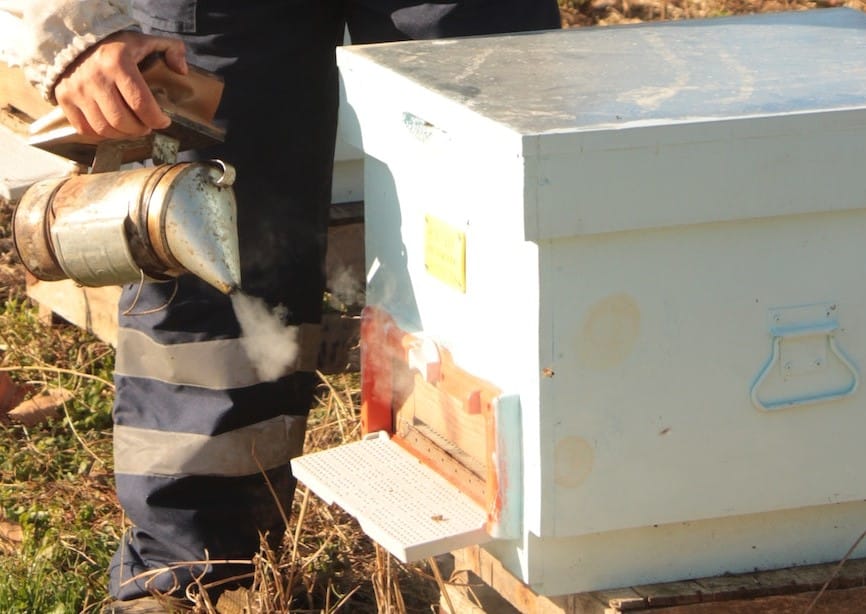
If you choose to use an escape board, you have fewer bees to deal with, but you may have to get rid of one or two.
With
Make only one trip per harvest
Flashback to the pre-flow hive era. The first step is to collect full frames of honey. Transport them to your processing area, where you either have a centrifuge or a large sieve for the crush method.
Once the honey has been extracted, you need to make another trip to the apiary to return the supers to their respective hives.
If you choose to use an escape board, you may need a third trip because the first one is used to install the escape board. I’m tired just thinking about it.
With the flow hive, you walk to the hive for the harvest, and once you leave, your harvest activity is done.
All you need to do is go and wash up the tubes you used and store them in readiness for the next harvest. One trip per harvest. This is definitely a time saver.
No heavy lifting, no sticky mess
Honey is very heavy. A fact you are never more aware of than when you’re harvesting honey or preparing the colony for winter.
The average weight of honey harvested per hive for most people is about 50 pounds.
Think about lifting, say, thirty pounds of fresh honey in a super. That doesn’t include the weight of the box and the frames. Add to that the heat in your hazmat suit.
Let’s say you have about ten hives to harvest. That’s a lot of heavy lifting.
Sometimes, you can’t get your truck that close to the hives. You will need to carry these heavy boxes more than a few yards until you get them to your processing area or your truck.
With flow hives, all you need to worry about carrying is your container filled with honey.
Even with the hives in unfriendly terrain, carrying a bucket with a handle is much easier than carrying a heavy wooden box that inhibits your ability to see your next step.
You only risk a spill if you’re using small jars because they fill up pretty quickly. Other than that, it’s a sanitary exercise, and your honey remains pure with minimal spillage.
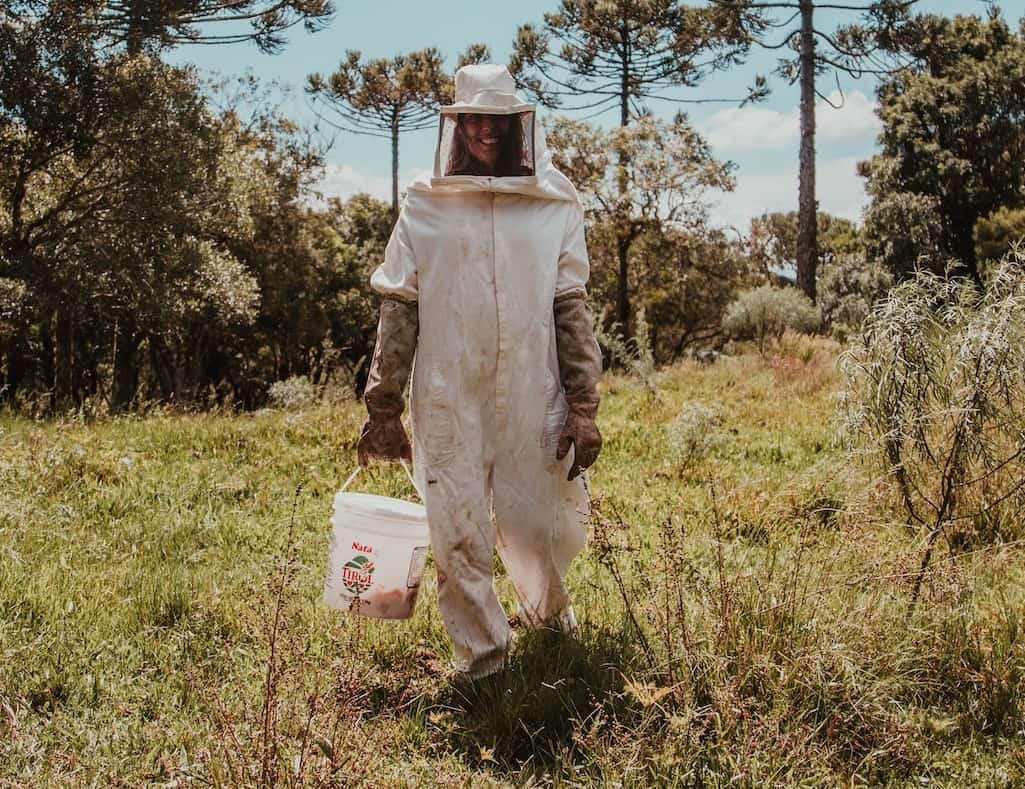
Less aggression from the bees during the harvest
Bees guard their honey jealously. Even docile breeds can be quite aggressive and will sting you a few times during a harvest, which is why even experienced beekeepers put on at least a veil.
Since the bees remain mostly undisturbed by the apparatus used, even your child can harvest that honey with little risk to their well-being.
Enjoy the different flavors of honey separately
Bees are happy to collect nectar from all the sources available to them as long as the nectar meets their sugar concentration requirements.
It is possible for the flavor of honey to vary from one frame to the next.
Since the honey can be released one frame at a time, it is possible to keep the honey from each frame separate.
Your taste buds can enjoy strawberry-flavored honey today and clover honey tomorrow. Taste the miracle of nature.
Disadvantages of the Flow Hive
Use of plastic frames
Although the aim of the innovators was to cause as little disruption as possible, their use of artificial materials, particularly plastic, to make up the flow frames is not especially pleasant to the bees.
In the spirit of fairness, many beekeepers use plastic in the hive. Some use plastic foundations. Even a queen excluder could be made of plastic.
The issue with the use of plastic comb is off-gassing. This is when a substance, such as plastic, releases chemicals in the form of gas over a period of time.
Although the plastic is food grade, the plastic is still said to have off-gassing properties. Nevertheless, many commercial beekeepers use plastic foundations

The honey is still safe but not as natural as honey taken from a top bar hive.
Another issue with plastic is that most bees don’t like it. You may need to coax your bees to begin storing nectar in the super by smearing some wax on the plastic comb.
One thing I will give the creators credit for is that they have foundationless frames in the brood boxes. There are also some wooden guiding strips in the frames so that the bees know where to construct the comb instead of using a foundation.
Promoting bee-havers rather than beekeepers
A bee-haver is a term beekeepers frown upon. It is reserved for those who have a ‘live and let live’ attitude toward keeping bees. They don’t inspect hives nor provide care for their bees, even when the colony’s survival is at risk.
Thus, you have bees. You don’t keep them. This is where the meat of the matter really is.
The flow hive is marketed as a non-invasive way to harvest honey. Unfortunately, some choose to view this as non-invasive beekeeping, which, in this day and age, doesn’t exist.
Even the makers of the flow hive go to great pains to explain that you still need to take care of the bees as you would with any other type of hive.
The flow system doesn’t repel mites or disease.
It doesn’t guarantee a healthy queen. You will still need to inspect the brood a few times a year.
You still need to monitor and possibly treat for varroa. Providing a nectar/honey substitute when mother nature falls short is also a necessity.
All these activities require the beekeeper (that’s you) to open up the hive and look through the frames.
It’s like claiming that cars with automatic transmissions make for lazy drivers, and a real driver will go with a stick shift.
In truth, automatic transmission only eases one aspect of driving, which is changing gears.
You, the driver, still have to make all sorts of decisions about speed and space, and you don’t get a pass for driving under the influence if you’re in an automatic car.
You still need to get your car serviced, and your oil changed.
Similarly, the issue experienced beekeepers have with the new flow hive has little to do with its design and almost everything to do with their perception of the marketing message.
When they see the almost effortless harvesting method, they see bee-havers rather than beekeepers.
It would seem that losing some of the work that goes into beekeeping, namely the heavy lifting and sticky messes, is linked to the soul of this practice.
You would think that the only time beekeepers get up close and personal with bees is when you’re harvesting, which is simply untrue.
Even as the debate rages on, it is important to recognize the marketing message of the flow hive as is, that is, the promise of an easier, friendly harvest.
Price
One flow hive could buy you two regular hives and two colonies. It is understandable that the flow hive should cost more because it contains so many fixtures and fittings.
It would be unreasonable to expect the price to match what already exists in the market.
Even so, a purchase like that would be left for the deep-pocketed hobbyist.

What Beekeepers Think of the Flow Hive
If the amount of capital raised is anything to go by, the reception of the flow hive has been very positive.
Michael Bush, author of ‘
Many more beekeepers admit that they were skeptical at first but found the first harvest extraordinary. Very few innovations keep their promises, but this one does exactly that.
Commercial beekeepers haven’t quite embraced it because the price per unit is quite high. But with time, who knows?
Business is all about keeping the cost of production low.
If, with mass production, the cost per unit would come down, having a system that connects the flow hives would save the beekeepers so much time that I can see a future where they could convert to flow.
Naturally, there are the naysayers who believe that the flow is propagating the idea of hands-off beekeeping. They say it encourages lazy beekeepers and promotes ‘beehavers.’
Others live in very cold areas and, until they fully understand their bees, complain that the flow hive is ineffective because they haven’t managed to enjoy a harvest.
What is important to note is that the flow hive does not alter bee behavior. Understanding bees is what leads to a successful venture.
Bad beekeeping practices such as neglecting your bees, failure to inspect the brood for a vibrant queen or signs of disease, over-harvesting, and lack of winter preparation will affect the colony regardless of the hive you put them in.
To be fair to the flow hive, their promise refers to an easier way to harvest honey and nothing more.
They still promote the inspection of brood and monitoring of hive pests such as varroa and small hive beetle.
In fact, the Flow Hive is fitted with a screened bottom board and a removable drawer you can use to keep an eye on the number of mites dropping out of the hive.
How to Introduce Bees to a Flow Hive and Feed Them
The flow part of the hive should not be introduced to the bees until they are fully established.
Once you install a colony in a brood box, you must care for them just like you would any other colony in any other type of hive.
You need to give them time to draw comb and ensure that the queen is adequately populating the hive.
Once they have drawn out comb on all the frames, then you can set up the flow super.
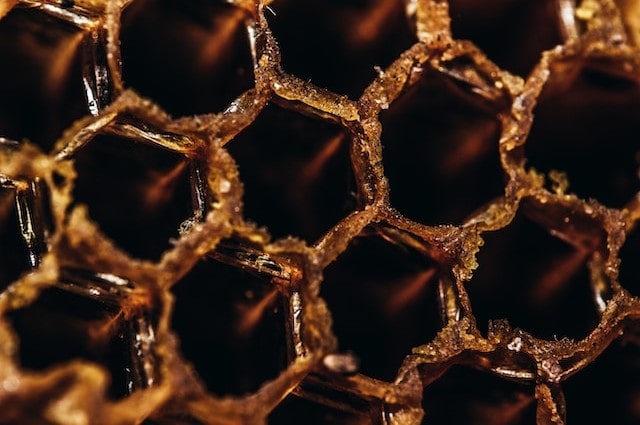
The flow hive is fitted with an inner cover that has a hole in it to allow the beekeeper to place nectar and or patties under the gabled roof for supplementary feeding.
The flow frames are already drawn out in plastic comb, which the bees may not be too eager to use.
Sometimes, they’ll get to work lining the plastic with wax and then proceeding to put it in the nectar.
Other times, the bees need a little encouragement. Rubbing some wax on the flow frames encourages the bees to start working on the honey super.
The same can be said about using plastic foundations, and is, therefore, a proven solution to this problem.
When to Harvest Honey From a Flow Hive
You can harvest honey from the Flow Hive when the bees cap it. That rule is the same in all types of hives. The difference is that you can see if the honey is capped without opening the hive.
Through the viewing windows, one can tell which frames contain capped honey.
That allows you to only harvest properly cured honey of one frame and come back in a week or two for another.
No need to worry about mixing nectar with your honey with this wonderful hive.
How Much Honey is Produced Per Flow Hive?
Each flow frame has the capacity to hold 3 kilos of honey, which is over 6.5 pounds.
Multiply that by 6 or 7 frames, and you can get over 40 pounds of honey per harvest, all other factors remaining constant.
Each colony will behave differently. Therefore, Flow Hive honey production will vary from hive to hive and year to year.
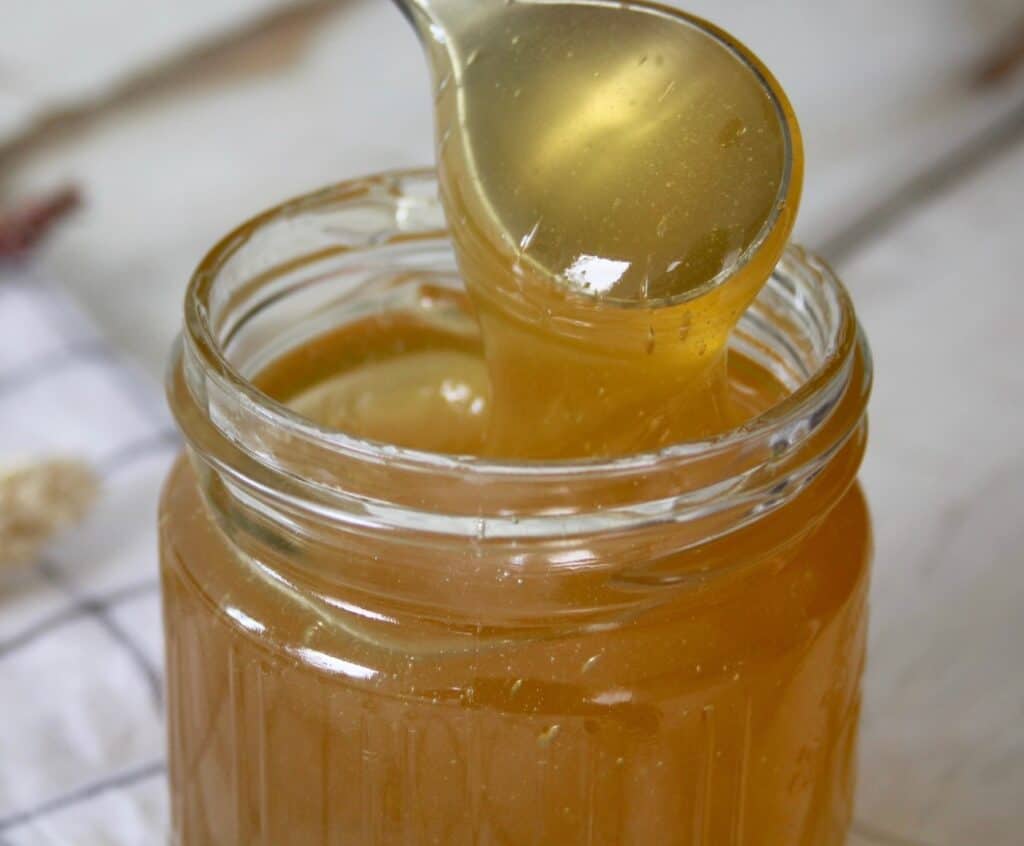
Flow Hive vs. Flow Hive 2 Compared
Did you know the inventors released a second version of the Flow Hive? Let’s see how the Flow Hive 2 compares with the original.
Flow Hive vs. Flow Hive 2 Similarities
Both versions of the hive are composed of the following:
A screened bottom board
This helps with pest management and ventilation.
Langstroth brood box
The lower chamber of the hive is the same as other Langstroth hives.
It is an 8-frame box with guides on the frames that allow the bees to construct comb freely, rather than using the prescriptive foundation.
The frames are still fitted with holes for wiring should the beekeeper choose to use a foundation.
The brood box does not have a viewing window. The activities needed to care for the brood still require the beekeeper to open up the hive and take out the frames one at a time for inspection.
6 flow frames
These go into the super. They contain a partially constructed plastic comb, which the bees finish off with wax.
Side viewing windows and an in-frame view
The side viewing windows allow you to watch your six-legged helpers. It can show you how receptive the bees are to your flow frames.
If you have a vibrant colony with little activity going on in the flow super, then you know you need to do something to entice them upstairs and get them to store their booty in your flow frames.
You can see if the honey is ready for harvest in the in-frame view. You will be able to see if the bees have capped the honey and watch it flow out of the hive.
Inner cover
This allows for additional ventilation and a space to feed your bees when they don’t have enough honey to get them through the winter.
Gabbled roof
This is more than just aesthetically pleasing. It allows rain and snow to fall away from the entrance, keeping the hive’s inside relatively dry.
Flow Hive vs. Flow Hive 2 Differences
The Flow Hive 2 took everything that worked in the classic version and made subtle yet effective improvements to enhance the experience of both bees and man.
Adjustable hive stand
Bees are pretty meticulous about their construction, and they need to ensure that the liquid that they store on a vertical shelf doesn’t spill down to the hive floor.
If the hive isn’t level, they will draw out their comb at an angle, which is a nightmare for the beekeeper to deal with.
These adjustable hive stands allow you to keep your hive level even when the hive is full without looking for pebbles or wooden pins to even things out.
It is a great way to have the bees construct a straight comb and avoid the hive toppling over on uneven ground.
Built-in level
The hive needs to slant slightly toward the back so that the honey is able to flow out of the hive easily.
The manufacturers removed the stress from you, the beekeeper, by fitting the base with a bubble level.
When the bubble is in the middle, the hive is sloped at the optimum position while continuing to be stable.
Adjustable shelf
The cover of the in-frame window doubles up as an adjustable shelf where you can place your small or large jars when you harvest.
Inner cover plug
Flow Hive 2 provides a plug for the hole in the inner cover to prevent the bees from accessing the inner part of the roof and building comb.
Brass screws for the roof
No need for cinder blocks for strong wind protection. The gabled roof is screwed on with brass screws for additional resistance to the elements.
The entire kit also comes with some helpful tools to aid in assembling the hive.
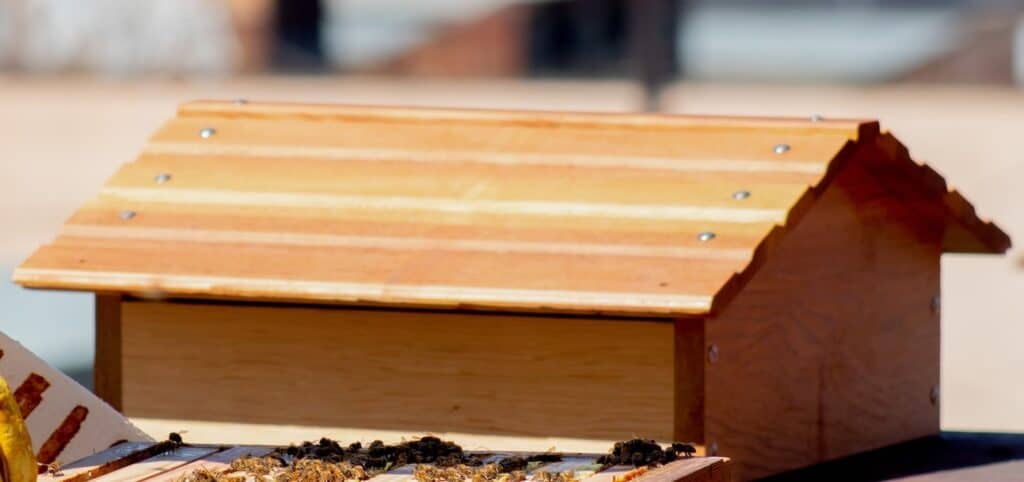
How Much Does the Flow Hive Cost?
The price depends on the type of flow hive you choose.
They even have a hybrid flow hive that allows for two regular frames in the super for those who prefer comb honey.
The different hives range from approximately $500 to $800.
Wrapping Up Our Flow Hive Review
The raging debate that labels this hive as controversial cannot ignore the advantages that the flow offers. We hope this Flow Hive review will help you to decide if it is right for you and make an informed purchasing decision.
The negatives, in my opinion, are far outweighed by the benefits offered by this flow technology. If you can afford it, even if it’s just the super, why not try it?

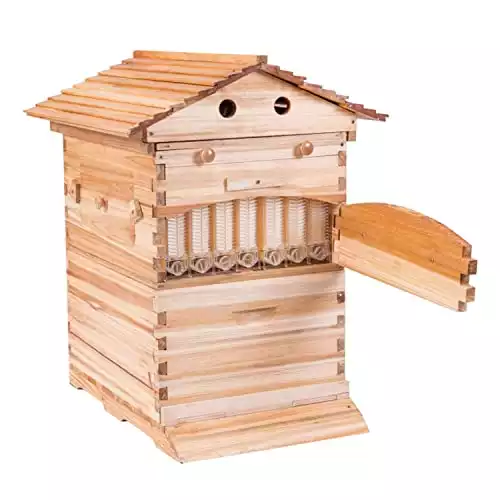

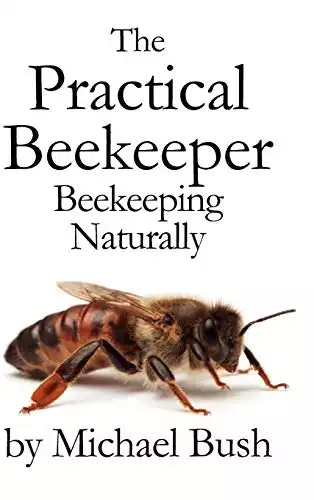
Humans just love to poo-poo on any new technology. Even though untried and unproven they’ll concoct all manner of allegations to support the poo-pooedness. I worked in a bicycle shop in the early 80’s. There was a new type of bicycle emerging on the commercial market-the mountain bike. Two camps soon emerged, road and mountain and ne’er the twain should meet. It was as if they despised each other. Of course today those animosities are long gone after years of development and progress have produced many sub-varieties of each camp. Beekeepers seem to be no different. Common element? Humans.
This is an excellent article.
Applause applause!
Often the moment I begin talking about anything “flow” the mood drops among beekeepers and they are not interested in a discussion that may change an opinion or two.
Early warnings, that you so well describe here, have a life of their own and all flow-owners have been frequently lumped together.
We all do our part for the bees in a way that also suits our individual management style.
Thank you!
These look to be useful in spring and early summer but here in the UK and Ireland the bees produce alot of ivy honey from August, this crystalises almost immediately so impossible to harvest from the flow hive. Hives close to peat bogs also produce large amounts of heather honey, which has an almost jelly like consistency so I can see problems with this system getting clogged. In a nutshell this hive is not for me.
Is the Flow super the only storage of honey other than the amount the bees would store in the brood chamber? If so and you harvest all the flow super what do the bees use for winter stores? Do you end up feeding all winter? Not sure if this was the place to ask the question but thought I would. Thanks
Hey Jerry.
I never take all the honey when I harvest. I will always leave a third in case of hard times.
I started with a flowhive after helping a friend with his and was hooked.
However after our first harvest my kids complained there was no wax comb to chew. So I now have 2 conventional hives as well.
I love harvesting from both systems and the bees are thriving in all the hives
Your way of presenting the article is amazing. Thank you for sharing such a great article with us.
Thanks for taking the time to write this article. I found it informative for someone considering bee keeping as a hobby.
Thank You for share. I’m considering keeping bees. This article was vary helpful.
How does the flow hive do in northern U.S. winters?
I was a small time Beekeeper, only 45 hives, until our gardener ‘s son ran off with them to Mexico while we took a short 3 day vacation. Now I’m starting all over. This will be an expensive start over with these hives, but I’m going to try it. Wish me luck!
Wow. That would be horribly shocking to come home to, and so depressing. How did the gardener respond?
como se puede comprar ???
What a pity they use extremely brittle plastic in the top of the frames.
When closing the cells after harvesting, no matter how gently we turn the lever the tops of some of the frames split, and after that the cells won’t close (I presume unless you remove the broken bit and whack the half cell with a hammer … )
Thanks for a very detailec article. I can see that robbing might be a problem when taking honey from the flow hive. I’d also be interested to know how often one needs to replace the super frames. I currently do this every 3 years.
Thanks for a very detailed article. I can see that robbing might be a problem when taking honey from the flow hive. I’d also be interested to know how often one needs to replace the super frames. I currently do this every 3 years.